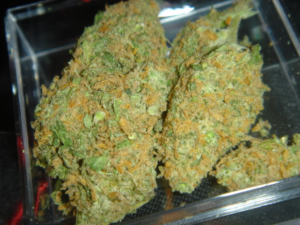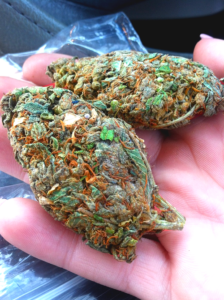
Weed in Brooklyn — the complete 2025 guide
Welcome to Brooklyn: a borough of brownstones, bodegas, bagels — and now an increasingly visible legal cannabis scene. Whether you live here, are visiting for the weekend, or are simply curious about how cannabis fits into Brooklyn life, this guide walks you through the law, where to buy, how and where you may (and may not) consume, tips for first-time buyers, neighborhood flavor, public health and safety considerations, and the practical realities of the still-evolving market. Short preview: adult-use cannabis is legal in New York for adults 21+, but there are limits on possession, rules about where you can consume, and a mix of licensed dispensaries and continuing illegal storefronts. This guide unpacks what to know, cites official sources, recommends reputable dispensaries and resources, and ends with practical FAQs. Weed in Brooklyn
1) Is cannabis legal in Brooklyn?
Yes — but with rules and limits. New York State legalized adult-use cannabis with the Marihuana Regulation & Taxation Act (MRTA) in 2021, creating the Office of Cannabis Management (OCM) to regulate the industry. Adults 21 and older may legally purchase, possess, and use cannabis within New York State under the MRTA framework and OCM rules. Weed in Brooklyn
Two practical points to remember:
2) What are the possession and purchase limits? Weed in Brooklyn
Key limits to memorize before you buy or walk around with cannabis in your pocket:
- Public possession: Adults 21+ may possess up to 3 ounces (about 85 grams) of cannabis flower or up to 24 grams of concentrated cannabis in public.
Those numbers are not suggestions — exceeding them can still lead to legal consequences. Also be mindful that federal law still lists marijuana as a controlled substance, so federal properties (e.g., some post offices, federal courthouses) and federally subsidized housing remain subject to federal prohibitions.
3) Where can you buy legal cannabis in Brooklyn?
Licensed, taxed, and regulated cannabis is sold through OCM-licensed dispensaries. Brooklyn now hosts multiple licensed stores across neighborhoods — from Gravesend to Williamsburg to Flatbush. Local press and neighborhood guides maintain up-to-date lists as new shops open frequently. If you want legal product and consumer protections (tested products, labeled potency, tax receipts), buy from a licensed dispensary.
4) Can you smoke weed anywhere in Brooklyn?
Short answer: No.
New York’s rules permit smoking or vaping cannabis in many places where smoking tobacco is allowed, but not everywhere. Important consumption rules and constraints:
- You may not smoke or vape cannabis in places where smoking tobacco is prohibited, enclosed workplaces and many indoor public spaces featured in local smoke-free laws. NYC Health and local clean-air laws still apply.
Practical guideline: if you’re in public in Brooklyn, the safest assumptions are (1) outdoor, open spaces are more likely to be OK than indoor or shared spaces; (2) always avoid consuming near minors; and (3) check local signage and building policies.
5) How to buy — step-by-step for first-timers Weed in Brooklyn
- Bring ID: valid government ID proving you’re 21+ (driver’s license, passport).
- Know the limits: you can purchase up to 3 oz flower (or equivalent amounts in concentrates/edibles depending on potency).
- Talk to budtenders: good shops will ask about your experience level and suggest strains, forms (flower vs. edible vs. tincture), and dosing. Start low and go slow — particularly with edibles.
- Keep your receipt & packaging: this proves lawful purchase if questioned and provides testing/ingredient info for safety.
- Transport safely: keep product sealed and out of reach while driving; open containers and consuming in vehicles is illegal and unsafe.
6) Types of cannabis products you’ll find
- Flower (smokable bud): commonly sold by weight (grams/ounces).
- Vapes/cartridges: concentrated oil for vaporizing devices; check cartridge provenance and lab results.
- Edibles: gummies, chocolates, drinks — potency and onset time vary; start with a low dose (1–5 mg THC) if inexperienced.
- Concentrates: dabs, waxes, shatter — high potency, intended for experienced users.
- Tinctures & topicals: sublingual or topical products with varying THC/CBD ratios.
7) Neighborhood flavor — where Brooklyn’s cannabis scene is taking root
Brooklyn is large and diverse; cannabis expression varies by neighborhood:
- Williamsburg / Greenpoint: boutique shops and concept stores targeting a younger, trend-seeking clientele; lifestyle branding is common. (Expect polished stores with staff who know product lineage and brands.)
- Flatbush / East Flatbush: a mix of medical legacy shops and newer licensed retail locations; community impact and equity programs are often discussed in local forums.
- Bay Ridge / Gravesend: earlier Brooklyn dispensaries opened here; small storefronts near transit corridors.
- Bedford-Stuyvesant and Crown Heights: neighborhoods where community groups pay close attention to the social equity aspects of legalization; operators and regulators are often working to balance economic opportunity with local concerns.
8) Safety, health, and harm-reduction
- Start low and go slow: especially with edibles (can take 60–90 minutes to feel full effect). A beginner dose is often 2.5–5 mg THC.
- Avoid mixing: don’t combine alcohol, benzodiazepines, or other sedatives with high doses of THC.
- If you feel unwell: stay hydrated, find a safe, calm place, and know that effects will pass with time. Seek medical help if severe reactions occur.
- Cannabis and driving: driving while impaired by cannabis is illegal. Plan transportation ahead of time.
9) Taxes and prices Weed in Brooklyn
Cannabis in New York is taxed at multiple levels (state and local taxes plus possible excise or other fees). Expect retail prices to include taxes; licensed dispensaries must display the total cost including taxes. Prices vary by product type, brand, and potency; competition and increases in licensed retail availability have been pushing some prices down, but high demand and taxation can keep prices higher than the illicit market for some products. Always compare price per mg or price per gram to get a sense of value.
10) Social equity, community, and the business side Weed in Brooklyn
A central aim of New York’s cannabis law is to repair harms from decades of disproportionate enforcement. The OCM’s licensing process and programs include social equity provisions intended to give priority or assistance to applicants from communities most impacted by prohibition.
11) Illegal shops and enforcement — what you should know Weed in Brooklyn
Since legalization, New York City has seen a proliferation of unlicensed cannabis sellers. The city and state have taken enforcement actions (closures, fines), but court rulings and enforcement logistics have complicated the process. Buying from unlicensed sellers carries risks: no lab testing, possible contaminated products, no consumer protections, and potential legal exposure.
12) Looking ahead — what to watch Weed in Brooklyn
- Consumption lounges: there’s been significant interest in regulated indoor consumption sites, but regulators have taken time to create formal rules—this is a space to watch as rules and licensed venues develop.
13) Recommended (cautious) places & how to find reputable shops Weed in Brooklyn
I don’t endorse specific businesses, but here’s how to find reputable, licensed retailers in Brooklyn:
- Start with OCM / NY.gov license lookup to confirm a shop is licensed.
14) Sample neighborhood itineraries (sensible, legal) Weed in Brooklyn
A weekend in Williamsburg: Visit a licensed dispensary (for shopping and education), grab brunch, enjoy an outdoor waterfront park (consume responsibly outdoors if you choose and it’s allowed by local rules), and finish with a music or arts event. Avoid consumption indoors unless you’re in a private residence or an approved venue.
A neighborhood evening in Flatbush: check for community-oriented retail shops, buy responsibly, and enjoy local restaurants or takeout — again, respect building rules and public spaces
FAQs — quick answers
Q: How old do I have to be to buy cannabis in Brooklyn?
A: 21 years old. You must show valid government ID.
Q: How much weed can I carry in public?
A: Up to 3 ounces of flower or up to 24 grams of concentrated cannabis in public.
Q: Can I smoke in a park or on the street?
A: Many outdoor public places allow cannabis where tobacco smoking is allowed, but avoid smoking near playgrounds, schools, or where prohibited by local rules. Building rules and federal housing rules still apply.
Q: Are there legal lounges where I can smoke inside?
A: Not widely yet. The law anticipates licensed consumption sites, but regulators have moved cautiously and many operators are still waiting for formal rules. Expect change but verify before relying on lounge availability.
Closing note
Brooklyn’s cannabis landscape is vibrant, rapidly changing, and a little messy — a lot like the borough itself. Legalization has brought legitimate, regulated options and important consumer protections, but enforcement, licensing, and consumption rules are still evolving. The best approach is to buy from licensed retailers, follow local and state rules, respect your neighbors, and stay informed via official OCM/NYC Health channels and reputable local reporting.
I have used Global Weedworld (Globalweedworld@galaxyhit.com) at least 4-10 times and every time it has been a top notch.
He is the best local plug you can find around. He is very pleasant, friendly and fast. He is a lifesaver.
He sells top shelf WEED and other stuffs at moderate prices. I will always recommend this guy when people ask me my ” go-to”.
All you have to do is follow his instructions.
Just send him an email and I bet you will come back for more once you finish with what you bought because his quality is amazing.
Also Contact him on his telegram link telegramhttps://t.me/GlobalweedWorld
⚠️ Know that he do not have telegram channels only the telegram link above

The strain was exactly what I was looking for. It had that perfect balance, and the high was smooth. Also, the packaging was discreet and professional. Really impressed
I’ve been buying online for a while, but this shop’s service and product quality set them apart.
Everything was fresh, potent, and the customer service is outstanding
My first purchase and I’m hooked.
Excellent product and the customer support was super helpful in answering all my questions. Highly recommend this site
From browsing to checkout, everything was seamless. Delivery was on time, and the product exceeded my expectations.
I’ll be recommending this to my friends
I’ve been buying from a lot of different places, but this one stands out. The bud is top-notch, and the prices are reasonable.
Will be ordering again soon! Amazing experience! The product was exactly as described,
and the packaging was on point—safe and odor-free. Thank you!
Delivery was crazy fast, and the product… This place is setting the bar for online weed shops. Keep doing what you’re doing. You’ve got a loyal customer for life.
Third order in a row — flawless. Told my friends — now they’re ordering too. This is how weed buying should be. Clean, easy, reliable.
Best decision I made all week. Real ones know. This site is fire. I don’t usually leave reviews, but this deserved one.
Delivery was crazy fast, and the product… This place is setting the bar for online weed shops. Keep doing what you’re doing. You’ve got a loyal customer for life.
I was worried about ordering online, but the packaging was perfect completely. You can tell they care about their customers. Fast replies and reliable support.